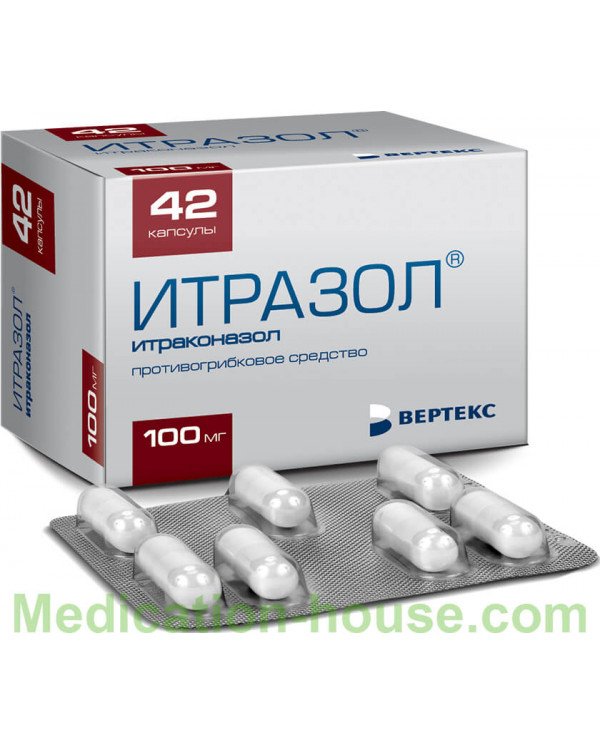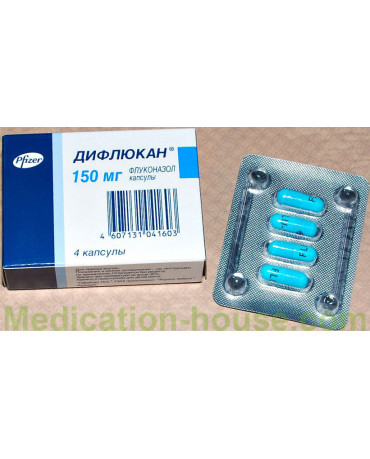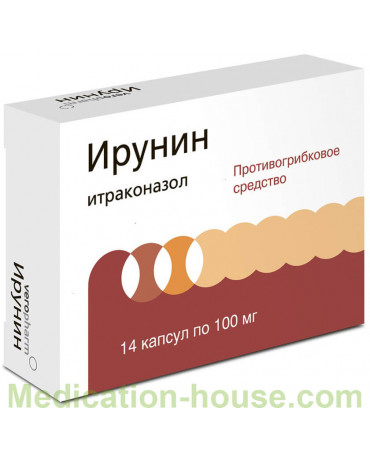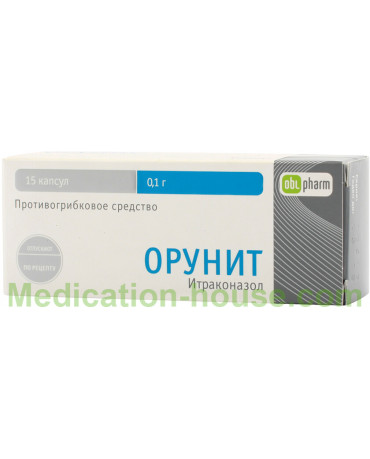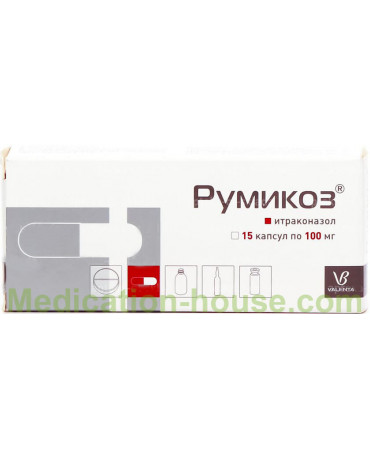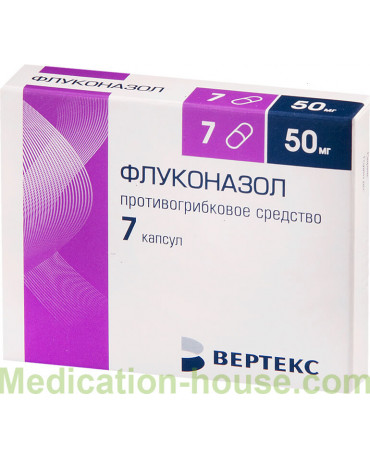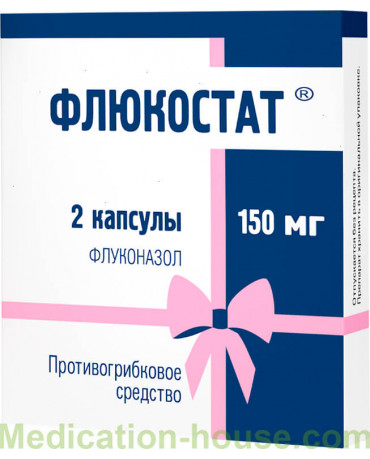Instruction for Itrazol
You can buy Itrazol here
Release form and composition
Itrazol is available in the form of capsules with a mass of 560 mg (6 or 7 pieces in blisters; 6 or 14 pieces in polymer cans).
The active ingredient is itraconazole, it contains 100 mg in 1 capsule.
Auxiliary components: poloxamer 188, poloxamer 188 micronized, hypromellose and sugar pellets consisting of corn starch and sucrose.
The composition of the shell of the capsule: gelatin and titanium dioxide.
Pharmacological effect
The main active ingredient of Itrazol, itraconazole, is a triazole derivative, an antifungal agent with a wide spectrum of action. This substance inhibits the synthesis of ergosterol (the main sterol) of the fungal cell membrane, which causes the pharmacological effect of Itrazol.
Itrazol is effective against dermatophytes (Epidermophyton floccosum, Trichophyton spp. And Microsporum spp.), And the yeast fungi Candida spp. (Including albicans, glabrata, krusei), and fungi (Blastomyces dermatidis, Cladosporium spp., Sporothrix schenckii, Paracoccidioides braziliensis, Fonsecaea spp., Aspergillus spp., Cryptococcus neoformans, Histoplasma spp.).
The effectiveness of treatment with Itrazol, according to reviews, is assessed 2-4 weeks after discontinuing the use of Itrazol, if mycoses were treated, and after 6-9 months (as the nail changes) - with onychomycosis.
Indications for use
According to the instructions, Itrazol is used for systemic and tropical mycoses, including the following states:
Histoplasmosis;
Cryptococcosis, including cryptococcal meningitis;
Systemic candidiasis;
Sporotrichosis;
Systemic aspergillosis;
Blastomycosis;
Paracoccidioidomycosis.
According to the instructions, Itrazol is also prescribed for the treatment of the following conditions:
Pityriasis versicolor;
Fungal keratitis;
Dermatomycosis;
Onychomycosis, which was caused by yeast, mold fungi or dermatophytes;
Candidomycosis, accompanied by lesions of the mucous membranes or skin, including vulvovaginal candidiasis.
Contraindications
Strict contraindications to the use of itrazol:
Pregnancy and lactation;
Children's age up to 3 years;
Hypersensitivity to Itrazol;
Acceptance of drugs metabolized by CYP3A4 isoenzyme (astemizole, terfenadine, mizolastine, quinidine, dofetilide, pimozide, cisapride, simvastatin, triazolam, lovastatin, midazolam).
Patients with liver disease, severe heart failure, and hypersensitivity to other azoles should be under special observation during the treatment period with Itrazol.
For children under 3 years old, the drug is prescribed in cases of extreme necessity and on condition that the expected benefits outweigh the potential risks.
Instructions for use
The instructions for use indicate that Itrazol is taken orally after a meal, swallowing the capsules whole and squeezed with water.
Recommended dosing regimens of Itrazol in systemic mycoses, depending on the type of infection:
Sporotrichosis: 1 capsule 1 time per day for 3 months;
Candidiasis: 1-2 capsules 1 time per day, the course of treatment can last from 3 weeks to 7 months. In case of invasive or disseminated diseases, it is possible to increase the dose up to 2 capsules 2 times a day;
Aspergillosis: 2 capsules 1 time per day for 2-5 months. In case of invasive or disseminated diseases, it is possible to increase the dose up to 2 capsules 2 times a day;
Cryptococcal meningitis: 2 capsules 2 times a day, the course of treatment is 2-12 months. Maintenance dose - 2 capsules 1 time per day;
Cryptococcosis (with the exception of meningitis): 2 capsules 1 time per day, the duration of therapy is from 2 to 12 months;
Histoplasmosis: 2 capsules 1 time per day for 8 months. If necessary, the dose can be increased to 2 capsules 2 times a day;
Chromomycosis: 1-2 capsules 1 time per day 6-month course;
Blastomycosis: 1 capsule 1 time per day for 6 months. If necessary, the dose can be increased to 2 capsules 2 times a day;
Paracoccidioidomycosis: 1 capsule 1 time per day for 6 months.
In onychomycosis, continuous or pulse therapy can be prescribed:
Pulse therapy involves taking 2 capsules of Itrazol daily, 2 times a day for 1 week. The number of such courses depends on the indications: in case of fungal diseases of the nails on the hands, 2 courses with a 3-week interval are performed, and for fungal diseases of the toenails (including those with damaged nail plates of the hands) - 3 courses with 3-week intervals.
Continuous treatment involves taking itrazol 2 capsules 1 time per day for 3 months. Since itraconazole is more slowly excreted from tissues of the skin and nails than from plasma, optimal mycological and clinical effects are achieved 2-4 weeks after the end of the course of therapy for skin infections and 6-9 months after the end of the treatment of nail plate infections.
Recommended regimens depending on the indications:
Pityriasis versicolor: 2 capsules 1 time per day for 7 days;
Candidiasis of the oral mucosa: 1 capsule 1 time per day for 15 days;
Vulvovaginal candidiasis: 2 capsules, 2 times a day, in a 1-day course, or 2 capsules, 1 time a day for 3 days;
Dermatomycosis of smooth skin: 2 capsules 1 time per day 7-day course or 1 capsule 1 time per day for 15 days;
Lesions of highly keratinized areas of the skin (feet and hands): 2 capsules 2 times a day for 7 days or 1 capsule 1 time a day for 30 days;
Fungal keratitis: 2 capsules 1 time per day 21-day course (depending on the dynamics of the clinical picture, the duration of therapy can be adjusted).
Side effects of Itrazol
Respiratory system: pulmonary edema;
Hypersensitivity reactions: angioedema;
Urinary system: dark urine discoloration;
Reproductive system: disturbed flow of menstruation;
Metabolic processes: an increase in the content of creatinine in the blood, the appearance of edema, a decrease in the concentration of potassium ions;
Damage to the skin and their derivatives: alopecia, itchy skin, rash, urticaria, Stevens-Johnson syndrome;
Central and peripheral nervous system: nausea, headaches, increased fatigue, dizziness, multiple lesions of peripheral nerves;
Digestive system: the appearance of pain in the stomach, toxic liver damage, increased activity of liver enzymes, jaundice due to stagnation of bile, inflammation of the liver, insufficiency of the liver in an acute form, constipation, partial or complete loss of appetite.
Overdose
A significant excess of the recommended therapeutic dose of Itrazol capsules may lead to the development of dose-dependent adverse reactions. In this case, washing the stomach, intestines, receiving intestinal sorbents (activated carbon), as well as symptomatic supportive therapy. There is no specific antidote to the drug.
Drug interactions
Drugs, the appointment of which is necessary to monitor their concentration in plasma, action, side effects (in the case of simultaneous administration with itraconazole, the dose of these drugs, if necessary, should be reduced):
oral anticoagulants;
HIV protease inhibitors such as ritonavir, indinavir, saquinavir;
some anticancer drugs, such as the Vinca roseal alkaloids, busulfan, docetaxel, trimetrexate;
CYP3A4 isoenzyme calcium channel blockers, such as dihydropyridine and verapamil;
some immunosuppressive agents: cyclosporine, tacrolimus, sirolimus;
other drugs: digoxin, carbamazepine, buspirone, alfentanil, alprazolam, brotizolam, rifabutin, methylprednisolone, ebastine, reboxetine.
Drugs that can not be prescribed simultaneously with itraconazole:
terfenadine, astemizol, mizolastin, cisapride, triazolam, midazolam, dofetilide, quinidine, pimozide, HMG-CoA reductase inhibitors such as simvastatin and lovastatin;
calcium channel blockers may have a negative inotropic effect, which may enhance the same effect exerted by itraconazole. At the same time taking itraconazole and calcium channel blockers should be careful, because the metabolism of calcium channel blockers can be reduced.
The interaction of itraconazole with rifampicin, rifabutin and phenytoin was studied. The simultaneous use of itraconazole with these drugs, which are potential inducers of hepatic enzymes, is not recommended. Studies of the interaction with other hepatic enzyme inducers, such as carbamazepine, phenobarbital, and isoniazid, have not been conducted, but similar results can be suggested.
Because Itraconazole is mainly metabolized by the CYP3A4 isoenzyme, powerful inhibitors of this enzyme can increase the bioavailability of itraconazole. Examples include ritonavir, indinavir, clarithromycin and erythromycin.
Reviews
We picked up some reviews of people about the drug Itrazol:
Leonid
The quality of the drug is not inferior to foreign manufacturers. The effect is 100%. Thank.
Irina
When I went to the pool, I picked up the fungus. Initially, treated with antifungal cream and ointments, but the effect was not observed. Moreover, the nail fungus was only spread. In the summer I could not wear normal shoes, as my legs were in terrible condition. But a dermatologist prescribed Itrazol for me. Saw him 2 courses. Better means you can not find. Everything went away with me, there was no trace of the fungus and no relapses. Now the nail plate is completely healthy.
Valentine
Took itrazol for almost half a year. The drug helps well, only constantly caused nausea, sometimes vomiting, but did not refuse to take it, and soon cured systemic mycosis. Now I take phenytoin for about 3-5 days for prophylaxis every three months. I regularly take tests, and everything has been normal for almost 5 years.
Storage conditions
To store in protected from light, the place, inaccessible for children, at a temperature not above 25 ° C. Shelf life - 3 years.
Terms of sell
You don't need a prescription to buy Itrazol.

